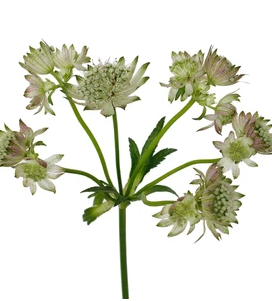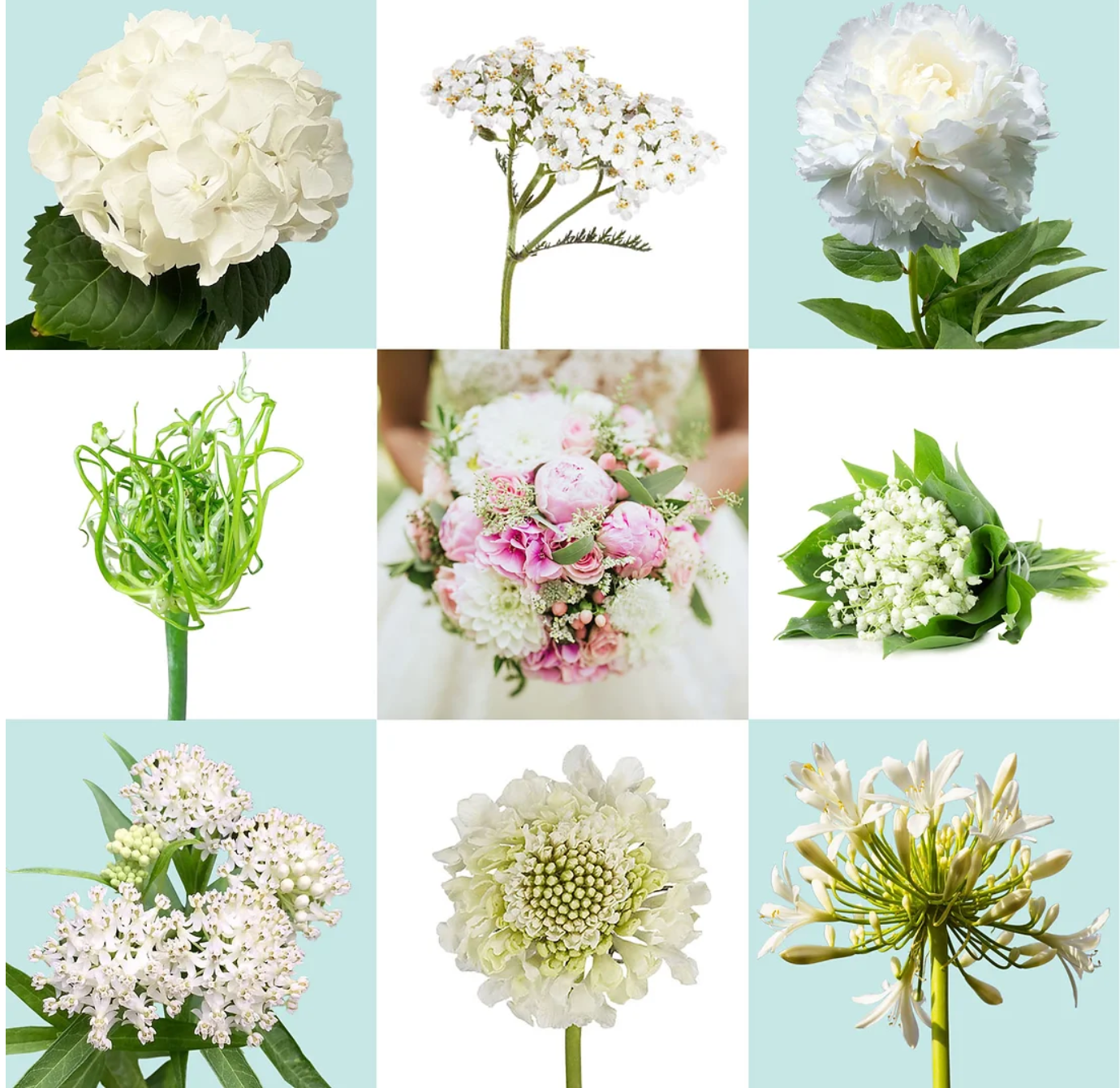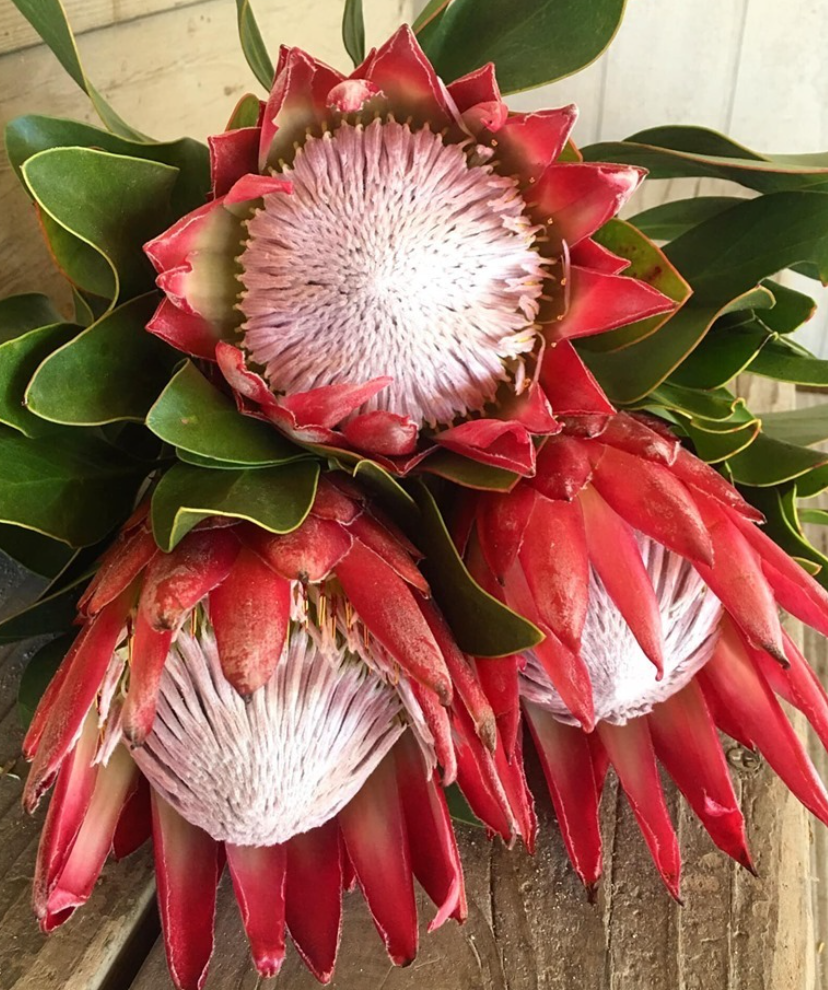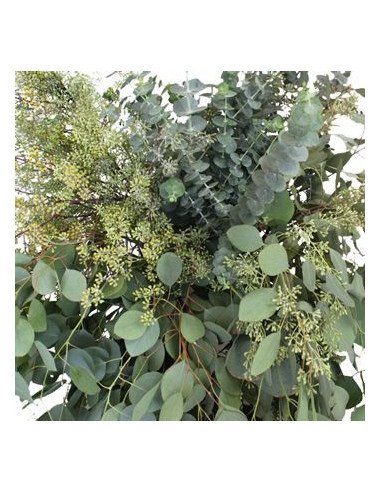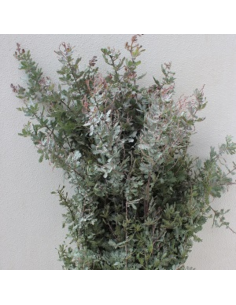Eucalyptus Mixed Box 5 / 10 / 15 / 20 bunches
- Mixed Varieties: The box will likely feature a mix of popular eucalyptus types, such as (large, rounded leaves), Seeded Eucalyptus (textured seeds and soft leaves), Baby Blue Eucalyptus (rounded, bluish-green leaves), Gunni Eucalyptus (compact, silvery-green leaves), Feather, Willow, and Spiral Eucalyptus.
- Varying Textures and Shapes: The assortment aims to provide a range of visual interest with leaves of different sizes, shapes, and textures. For example, the large, round leaves of Silver Dollar contrast with the wispy, pointed foliage of Feather and Willow varieties.
- Gray/Green Color: Eucalyptus generally features a palette of gray-green leaves with a soft, faded appearance.
- Clean Scent: Many varieties of fresh eucalyptus possess a pleasant, clean scent.
- Seasonal Availability: While many eucalyptus varieties are available year-round, the exact mix and appearance may vary depending on the season and availability. For example, Seeded Eucalyptus seeds may appear "cupped" in late spring and early summer.
Versatility in Use: Florists can use the assorted eucalyptus in a variety of ways:
- Garlands: Create lush garlands for weddings, events, or home décor.
- Arrangements: Add texture, volume, and fragrance to bouquets and centerpieces.
- Hand-held Bouquets: Incorporate eucalyptus for a natural and rustic look.
- Large Events: Utilize the bulk greenery for decorating venues and creating visually impactful installations.
- DIY Wedding Greenery: Assorted eucalyptus boxes are popular for DIY brides and event planners who want to create their own arrangements and decorations
Flower Care Steps – From Arrival to Use
Step 1: Unpack and Inspect
-
Unpack Promptly: Open your boxes as soon as they arrive and remove any straps or outer packaging such as foam or paper. Take photos of the box labels on the ends of the boxes showing the product name, NOT the fedex labels. This is crucial in the event of any quality or other product issues.
-
Inspect Your Greens: Look over your products for any concerns before continuing with processing.
Step 2: Prepare the Containers
-
Use Clean Buckets: Choose buckets or containers that are clean and free from soap residue or bacteria. Rinse with warm water if needed.
-
Add Water: Fill each container with at least 4 inches of fresh, cool water. If flower food is available, follow the packet directions and mix it in.
Step 3: Trim and Place in Water
-
Remove Packaging: Take off any rubber bands or plastic sleeves protecting the flowers.
-
Remove Foliage Below the Waterline: Strip any leaves that will fall below the waterline to prevent bacterial growth.
-
Trim the Stems: Use clean, sharp floral shears or scissors to cut about 1 inch off each stem at a diagonal under cool running water. Avoid using household scissors, which can crush the stems and limit water absorption.
-
Place Immediately: After trimming, place the stems directly into the prepared water.
Step 4: Hydrate and Maintain
-
Hydration Time: Allow your flowers or greenery to hydrate for at least 4 hours — 8 to 12 hours is ideal.
-
Monitor Water Levels: Flowers drink heavily when they first arrive, so check water levels frequently and refill as needed.
-
Avoid Overcrowding: Ensure each container has enough space for the amount of flowers or greens you're processing. Overcrowding can lead to damaged stems and leaves.
-
Storage Conditions: Store hydrated greenery in a cool, shaded area away from direct sunlight, heat, or drafts until you're ready to use it.
Step 5: Refresh and Use
-
Change Water Daily: Refresh the water every 24 hours to keep your greens fresh and bacteria-free until use.

